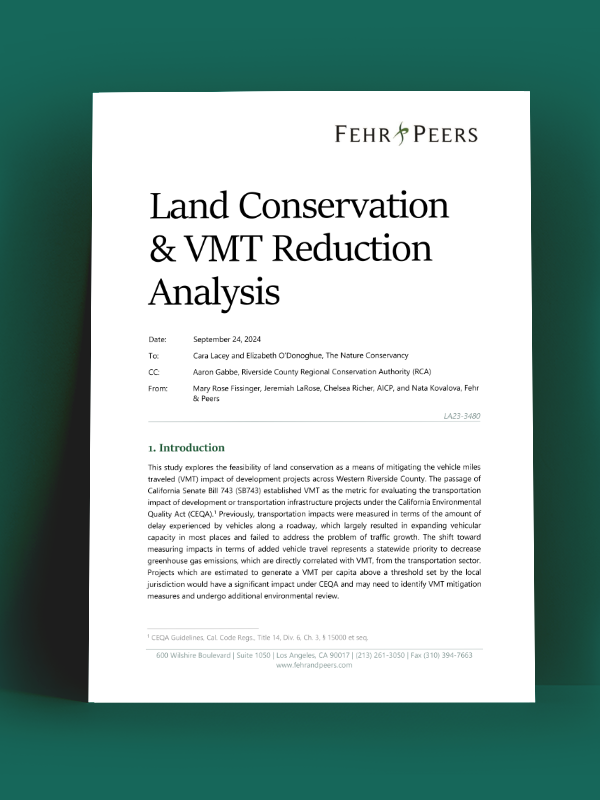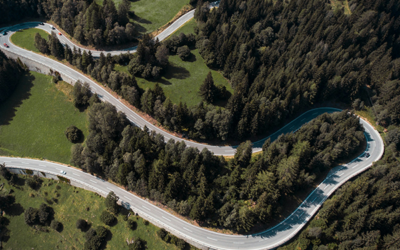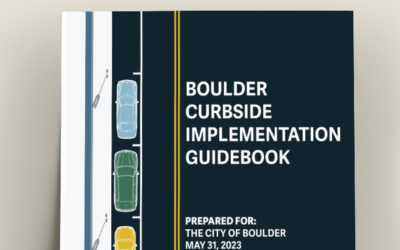Land Conservation and VMT Reduction Analysis
Land Conservation and VMT Reduction Analysis
Policies targeted at reducing Vehicle Miles Traveled (VMT) can be a powerful tool for advancing sustainable land development patterns. Our new white paper explores how VMT mitigation programs could protect biodiversity, preserve critical habitats, and support land conservation.
We recently worked with the Western Riverside County Regional Conservation Authority (RCA) and The Nature Conservancy to explore how VMT credits could be leveraged to fund conservation efforts, aligning transportation and conservation goals. By converting high-VMT parcels into conservation areas and instead encouraging development in lower-VMT areas, this approach helps combat sprawl while achieving long-term environmental benefits.
Read the full white paper to learn more about this innovative strategy, and contact us to explore how it could apply to your projects.
share this article
Contributors
Chelsea Richer
Climate & Resilience Discipline Leader
AICP
Email Me
Mary Rose Fissinger
Senior Engineer/Planner
Email Me
Jeremiah LaRose
Senior Associate
Email Me
Nata Kovalova
Engineer/Planner
Email Me
Explore More
The Road Less Traveled
Learn about our solutions that provide simple, effective, and scalable options to bridge the gap between expectations and resource constraints in rural transportation planning.
2023 Staff Promotions
Join us in congratulating 112 of our team members who earned promotions for their outstanding contributions this year.
Boulder Curbside Implementation Guidebook
The guidebook offers data-driven strategies to reallocate curb space for various uses—such as loading zones, micromobility, and outdoor dining—while addressing safety, sustainability, and community needs. It includes implementation tools, pricing models, design considerations, and guidance for integrating emerging technologies like dynamic curb management and autonomous vehicles.








